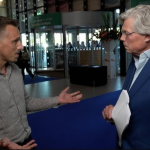Now Reading: The Most Interesting Ways to Organize Your Workday for Higher Productivity
-
01
The Most Interesting Ways to Organize Your Workday for Higher Productivity
The Most Interesting Ways to Organize Your Workday for Higher Productivity

When many people think of productivity, they imagine squeezing as much as possible into every available hour—a calendar filled end-to-end and an ever-growing to-do list. Yet the truth is that working like this isn’t sustainable, nor is it necessarily effective. Productivity is less about doing more and more about creating the right kind of flow: designing your day so that your natural patterns of focus, creativity, and energy work with you rather than against you. By practicing this intentional approach, the workday can feel less like an uphill battle and more like an adaptable system that evolves around your needs.
One of the most interesting ways to achieve this is to pay attention to your energy cycles. Most people have stretches of the day when they feel especially alert and other moments when their energy dips. For some, mornings bring mental clarity, while others only reach peak focus in the late afternoon. By aligning your deep, demanding work—like writing, creating, or complex problem-solving—with your natural peaks, you’re able to tap into your full potential. Meanwhile, lighter tasks such as email responses or routine check-ins can be slotted into those valleys when concentration is naturally lower.
Equally important is the art of stepping back. Many people push through fatigue, assuming that constant effort is the only path to progress. But science—and lived experience—show that breaks are the very fuel that sharpens focus. Short walks, mindful breathing, or even a few minutes spent in quiet reflection can reset the mind, preventing mental fog from draining your productivity later. These pauses aren’t wasted time; they’re catalysts for renewed efficiency and inspiration.
Another key principle is learning to layer priorities intelligently. Not everything urgent deserves to overshadow important, long-term work. By organizing tasks into layers—urgent, important, ongoing, and future-oriented—you create a system that accounts for today’s deadlines without losing sight of tomorrow’s growth. This layered view prevents the feeling of always firefighting and instead builds days that advance both immediate and strategic goals.
Finally, consider how the environment you construct around your workday influences your output. A thoughtfully designed workspace—whether physical or digital—acts like a silent partner in your productivity. This might mean using tools to limit digital distractions, creating visual cues that signal focus time, or simply reshaping your surroundings to invite clarity rather than chaos. By making small, consistent adjustments, you help transform your workday from a grind into a naturally flowing rhythm—one that leaves space for both serious accomplishment and the kind of serendipitous thinking that often leads to breakthrough ideas.
Once you recognize the role your energy cycles play, the next challenge is structuring your day in a way that amplifies those natural rhythms. This is where intentional productivity strategies come in. Rather than leaning on generic advice, the most interesting methods are those that create momentum, cut through noise, and match the character of your work and personality.
One powerful approach is batch scheduling. Instead of scattering similar tasks throughout the day—like calls, emails, or administrative duties—you cluster them into a dedicated window. This decreases the mental drag of switching gears, allowing you to stay in one mode long enough to make progress. For instance, you might answer all messages for the day in two focused periods, freeing the rest of the day for uninterrupted creative flow.
Another strategy is task-theming, where entire days or segments of the week are devoted to a specific type of work. Monday might be your planning day, Tuesday your client-facing day, and Wednesday your deep creative workday. This method not only creates a sense of narrative in your week but also reduces decision fatigue—because you already know the “theme” each day will follow. It’s an especially effective choice for those juggling overlapping responsibilities that tend to compete for attention.
Strategic time-blocking takes organization one step further. This method involves mapping out portions of your calendar with pre-defined blocks for particular kinds of work, rest, or even “buffer” time. By visually seeing where your hours go, you highlight intentional priorities instead of letting the day be ruled by whatever pops up. But it’s crucial to use time-blocking flexibly—not as a rigid constraint. If unexpected opportunities or setbacks arise, you can shift blocks without losing sight of the overall structure.
All of these structures point toward one central idea: productivity is not about speed but about sustainability. The goal is not just to power through today’s to-do list but to create patterns that allow you to show up consistently without burning out. Protecting focus from interruptions, reclaiming time that usually gets lost in transitions, and building momentum are what help you feel the satisfaction of progress instead of the stress of never doing “enough.”
The most interesting way to think about organizing your workday, then, lies in viewing it as a living system—one that you experiment with, refine, and adapt as your needs, job responsibilities, and personal rhythms change. What works for you now may not work six months from now, and that’s not a failure; it’s part of the process of evolving alongside your goals.
By blending techniques like batching, theming, and time-blocking with a deep respect for your own mental rhythms, you arrive at a structure that feels less like an external demand and more like an extension of how you naturally operate. This is when productivity stops being about squeezing tasks into every empty space and starts being about clarity, creativity, and balance—the true markers of not just higher output but also a more fulfilling work life.
✅ In short, the most interesting ways to organize your workday aren’t rigid formulas. They’re flexible, tailored systems you experiment with to create flow, preserve energy, and align your daily efforts with what matters most. That shift—from chasing hours to cultivating rhythm—is the difference between burning out and thriving long-term.


















